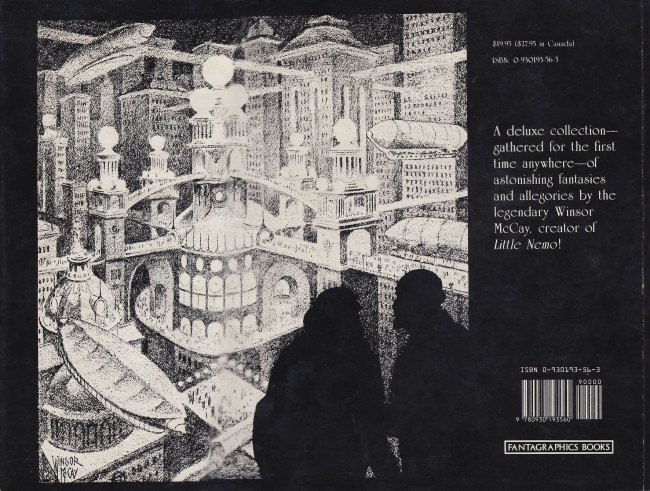


Winsor McCay first produced the hallucinogenic Dream of the Rarebit Fiend in 1904, a year before his dream romps of Little Nemo and a full generation before the Surrealist movement unleashed their subconscious on the public. Right|thumb|alt=Photograph of a Welsh rarebit, melted cheese on toast|A Welsh rarebit-seasoned melted cheese on toast The strip is said to have anticipated a number of recurring ideas in popular culture, such as giant characters damaging cities (as later popularized by King Kong and Godzilla). Porter's live-action Dream of a Rarebit Fiend in 1906, and four pioneering animated films by McCay himself: How a Mosquito Operates in 1912, and 1921's Bug Vaudeville, The Pet and The Flying House. Rarebit Fiend was the inspiration for a number of films, including Edwin S. The strip was revived 1923–1925 as Rarebit Reveries, though few examples have survived. His editor there thought his highly skilled cartooning was "serious, not funny", and he was made to give up comic strips to do editorial cartooning. The popularity of Rarebit Fiend and Nemo led to McCay being hired for William Randolph Hearst's chain of newspapers with a star's salary.

The strip is mostly recognized as an adult-oriented precursor to Nemo. This was in great contrast to the colorful, childlike fantasy dreams in Little Nemo. The dreams often revealed the darker sides of the dreamers' psyches-their phobias, hypocrisies, discomforts, and dark fantasies. The character would awaken from the dream in the last panel, regretting having eaten the rarebit. Instead, it had a recurring theme: a character would have a nightmare or other bizarre dream, usually after eating a Welsh rarebit (a cheese-on-toast dish). The strip had no continuity or recurring characters. For contractual reasons, McCay signed the strip with the pen name "Silas". Rarebit Fiend was printed in the Evening Telegram, a newspaper published by the Herald.

It was McCay's second successful strip, after Little Sammy Sneeze secured him a position on the cartoon staff of the New York Herald. As in McCay's signature strip, Little Nemo, the strip was made up of bizarre dreams. Dream of the Rarebit Fiend was a newspaper comic strip by American cartoonist Winsor McCay which began September 10, 1904.


 0 kommentar(er)
0 kommentar(er)
